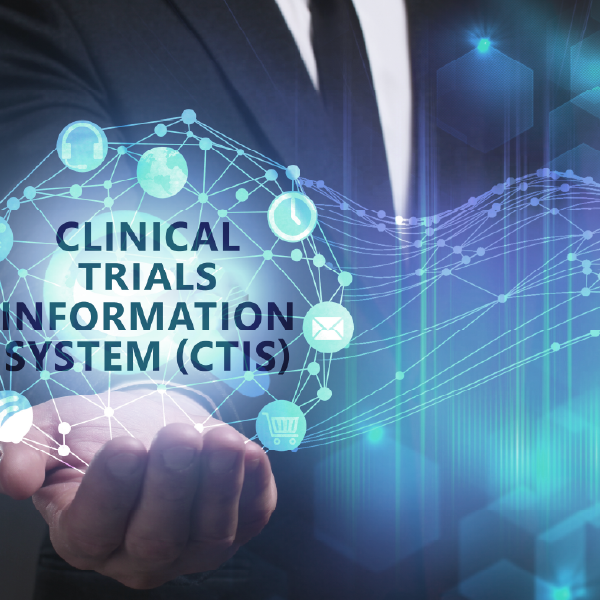Start plain language summaries early or get left behind

In July 2019, the European Union (EU) Clinical Trial Regulation No. 536/2014 will go into effect, requiring all sponsors, including academia, conducting clinical trials to draft lay or plain language summaries for phase 2-4 clinical trials. These lay summaries need to be published to the new portal that will be hosted by the European Medicines Agency (EMA) within 12 months from the close of each clinical trial.
“Any sponsor with a clinical study that is set to complete after July 2019 will need to be in compliance,” said Kasim McLain, Manager, Disclosure Services at MMS, and former Manager, Clinical Disclosure Lead at GlaxoSmithKline. “With the ever-changing landscape of clinical trial disclosures, it is not clear if there will be retrospective requirements for studies that have completed before July 2019.”
McLain explains further, “If a clinical study ends in July 2018, it’s not clear at this point if a lay summary will need to be submitted for that study when the regulation goes into effect one year later, in July 2019. Retrospective disclosure has been required as a part of other EU legislation in the past.”
If retrospective disclosure comes into play, sponsors have the potential to be hit with a large backlog of studies when the clinical trial regulation goes into effect.
Developing processes at a sponsor level
“Each sponsor should currently be developing their own internal processes for drafting lay summaries,” said McLain.
Part of this development should include drafting and defining a lay summary template, and gathering input from a variety of parties, including, regulatory teams, legal, the medical monitor, third-party experts, and more. Following the finalization of the template, a process for reviewing each lay summary should be ironed out, according to McLain, prior to submitting the summary to patients and the agency.
“There could be 10 reviewers for a single lay summary,” explains McLain. “Commonly, I have seen a global medical lead, multiple clinicians, multiple statisticians, and the portfolio attorney all review the plain language summary for a clinical trial. Each stakeholder may want the lay summary to focus on something different, and reaching a consensus requires a robust review and approval process not to mention time for all these reviews and edits.”
Additionally, these summaries need to be non-promotional in nature, and each person needs to be comfortable with the data being disclosed. Determining who should be involved in the review process to work through questions regarding promotional language, the intended audience, and the technicality of data is a key step in the process.
As the composition of a clinical team and legal review is different for each sponsor, creating an appropriate workflow for review that is consistent across the organization ahead of time becomes vital. This is where a pilot program helps.
Creating a pilot program
“A pilot program is recommended for all sponsors this year to test out the internal process and gain valuable patient feedback before the legislation goes into effect,” said McLain.
McLain recommends starting with five lay summaries. Once delivered to patients, she advises Sponsors to collect feedback to determine if the lay summary is valuable to and easily understood by the patient population. This feedback may serve to guide the evolution of the lay summary process within sponsor organizations.
Identifying why a full year is needed for a pilot, program, McLain mentions that, once the process is underway and summaries have been drafted for different types of trials, sponsors “may elect to report different subsets of data, take a different approach to displaying data graphically, and revise their template.”
Two areas that change the most throughout the pilot process are the types of endpoints and the subset of safety data that sponsors decide to report. First, Sponsors must make a critical decision regarding which endpoints to report. A Sponsor who initially decides to report data for both primary and secondary endpoints may ultimately decide that they are reporting an overwhelming amount of information, explains McLain, resulting in an agreement to report data for only primary endpoints. Second, it’s important that Sponsors decide whether to report all adverse events (AEs), AEs that could be attributed to study drug, or those occurring at a specified frequency threshold.
“No matter what is decided, it is important to adopt a uniform approach that is properly defined and employed across all summaries,” said McLain. “Otherwise, it may look like the Sponsor is cherry-picking and reporting favorable data only.”
Training the clinical team
“Guidance regarding what is to be disclosed in a lay summary is very brief and open-ended,” said McLain. “Training is key to ensure that data are reported uniformly across clinical programs and trials.”
Due to the nature of clinical trials, a single clinical team may only have one lay summary to review and approve per year. However, these teams still need to be trained on what a lay summary is, its intended use, and how to review a lay summary.
“Training clinical teams takes time, depending on how many teams there are, and yearly refresher courses should occur to make sure each team member understands what is being asked of them,” said Jessica Alamdari, Associate Manager, Corporate Quality, MMS. “When implementing our lay summary process, each stakeholder was tracked and periodically reminded to take the necessary training in a specified amount of time.”
The added turnover within clinical teams makes it vital for implementing yearly refreshers as well.
As additional clinical trial disclosures and transparency regulations are put into effect, more deliverables are anticipated in more formats. For lay summaries, documents are written at a six- to eight-grade level, and, on the surface, they appear to be simplistic in nature. However, the summaries are extremely nuanced and must be drafted to serve the needs of their target audience – the patients. To put lay summaries in a format and language that patients understand, McLain suggests “giving the process a year before it’s finalized in order to meet regulatory requirements.”
“Transparency should not be seen as just a regulatory requirement,” said McLain. “Adopting increased clinical trial disclosure and transparency and making it a priority is a way to demonstrate a dedication to patients and how they are helping advance science.”











